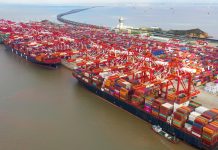In the previous year, the land business’ demeanor toward manageability has moved essentially.
Another study shows that 93% of land financial backers think the pandemic has been a reminder to put ESG on the highest point of the plan, while 83% of occupiers accept the connection between corporate land and maintainability is a board-level need.
Given the fabricated climate represents 40% of all fossil fuel byproducts, there’s as yet far to go.
Yet, industry chiefs expect critical changes when 2025, as per Decarbonizing the Built Environment report, which reviewed almost 1,000 senior pioneers across 20 nations. With rising interest for supportable spaces, practicing environmental awareness is progressively appearing well and good.
Peruse on for five regions where land pioneers hope to see enormous changes in the following not many years.
1. More organizations are composing carbon decrease into land methodologies
Handling fossil fuel byproducts will not occur without an arrangement. In the JLL study, 56% of respondents said that their corporate land technique explicitly addresses decreasing fossil fuel byproducts.
By 2025, 85 percent anticipate that it should be a piece of the technique.
“Administration, straight up to the c-suite, realizes this is presently not a pleasant to-have some portion of a corporate procedure,” says Marie Puybaraud, Global Head of Research at JLL Work Dynamics. “The speed at which this is moving has gotten essentially over the most recent few years, and organizations that are slacking need to get designs set up or hazard being abandoned.”
These procedures can remember following energy utilization for structures and portfolios and having a standard method of detailing that information to follow progress. For other people, it very well may be tied in with having a devoted spending plan for carbon-decrease drives.
2. Taking on net zero carbon targets is moving into the standard
Resolving net-zero fossil fuel byproducts is seen as basic to meeting global objectives to address environmental change.
At the present time, 28% of those reviewed said their association has embraced a net-zero carbon target. In any case, an extra 38 percent said that expect to do as such by 2025.
While some net-zero responsibilities have space for move through measures, for example, balancing, different drives, for example, science-based targets have stricter rules. Today 39% of firms have made that additional stride, with a further 30 percent expected by 2025.
“Net-zero carbon is at the core of the arrangement,” says Richard Batten, Global Chief Sustainability Officer at JLL. “While many organizations are defining objectives for 2030 and then some, the greater part are yet to sort out how they’re going to arrive and how they will report their advancement.”
3. Building qualifications matter
Normalized rating frameworks for a structure’s manageability accreditations, like LEED or NABERS, have become more normal as of late.
The advantages are likewise now more clear. For financial backers, affirmed structures can order higher rents, while for corporate occupiers, it’s taking advantage of the assumptions for progressive manageability disapproved of workers.
Accordingly, 45% of occupiers in the study said they focus on structures with green accreditations. That is set to ascend to 85 percent by 2025.
4. Moving concentration to retrofitting and repair
It’s one thing to utilize reasonable materials and advancements in new structures. In any case, updating existing land – in other words, most structures – is fundamental for financial backers, organizations, and urban communities to hit green targets.
Organizations know about what lies ahead: 73% of those studied said that by 2025 they will retrofit resources for consent to net-zero focuses, up from 34% today.
“Retrofitting structures is basic to meeting carbon-decrease targets,” Puybaraud says. “We can’t just form right out of the issues we face. We need to manage what as of now exists.”
With regards to fossil fuel byproducts from a structure’s whole life cycle, just 36% of respondents said today’s a concentration, albeit that is relied upon to ascend to 71 percent by 2025.
5. Utilizing innovation to drive progress
Innovation is at the center of driving a significant number of the progressions expected to hit net-zero targets.
This frequently reduces utilizing energy all the more productively. It’s beginning and end from warming and cooling frameworks to making more brilliant structures that further develop space use through sensors.
Today the center is cutting water use (65%), lessening waste to landfill (61%), and utilizing tech, for example, sensors to upgrade building execution and backing support (58%). As tech advances and take-up develops, diminishing functional energy use through any semblance of keen warming, brilliant lighting, and following stages is relied upon to increment to 90% by 2025.


































